I was teaching a compassion retreat last week with Choden for the cohort of students on our new Masters degree program. This program is in teaching mindfulness and compassion and we partner with the University of the West of Scotland to deliver it. During the retreat we were asked about the evidence base for compassionate imagery practices and so I thought I could investigate that this week.
Mindfulness Level 2 – Responding with Compassion we use compassionate imagery quite a lot, as we do in our 8 week Compassion Based Living Course (CBLC), which we train people to teach. Choden and I have been working on this material quite a lot recently as we have almost finished writing our third book together, about our compassion training. We hope it will be published next year.
In our compassion training we start with a compassionate colour practice, then safe place practice and then compassionate being/image practice. We also use imagery in the compassionate bodyscan practice, compassion for the self-critic practice and in the circle of allies practice. So, we use imagery a lot! This doesn’t mean that we imagine perfect images in our minds, but it means that we allow our imagination the freedom to imagine in its own way.
In the practice of compassionate imagery we draw on the work and research of Prof. Paul Gilbert and colleagues, which is summarised below. Paul is a longstanding collaborator with us. For an overview I can recommend the 2017 book edited by Paul called Compassion: Concepts, Research and Applications. I will write more about this book in future blogs. Otherwise, here are some highlights from Paul and his colleagues’ research.
Much of the research is based on compassionate image practice in which an ideal being of compassion is imagined as a being outside of us, which then offers us compassion. The other practice often referred to in the research is the compassionate self practice in which we imagine ourselves as an ideal being of compassion.
Starting in 2004 there was a pilot study in which 9 self-critical people who volunteered to take part in the study attended four meetings and were trained to use compassionate imagery including safe place and compassionate image. By the end of the training they had improved their ability to self-soothe in self-critical situations.
Moving on to 2006, this study was again with self-critical people and the results suggested that the trait of self-criticism is related to the ease and clarity with which people can generate hostile and powerful self-critical images. The trait of self-reassurance is associated with the ease and clarity of generating warm and supportive images of the self. They postulated that difficulties in generating self-reassurance and compassionate images about self, with self-directed warmth, may contribute to depressive symptoms.
In 2008, Rockliff, Gilbert et al published a pilot study exploring heart rate variability and salivary cortisol responses to compassion focussed imagery and found that working with such imagery could stimulate the soothing affect system. The suggested imagery was the compassionate image practice.
A study in 2010 by Kelly et al explored whether training in self-compassion could assist with self-regulation, in particular smoking reduction. 126 smokers wanting to quit were split into four groups and one group involved engagement in self-compassion imagery and compassionate self-talk when experiencing the urge to smoke. They found that the self-compassion group reduced smoking more rapidly in those who were low in readiness to change, were initially high in self-criticism and experienced vivid imagery during the practices.
In 2011 a study was conducted by Rockliff et al and explored the effects of participants taking a dose of the hormone oxytocin on their ability to engage in compassionate imagery practices. Oxytocin is a hormone, which is involved in childbirth and mother/child bonding and which is also associated with empathy, trust and relationship building. This study of 44 participants explored the effects of compassionate imagery practice with and without the dose of oxytocin. It found that the dose of oxytocin increased the ease of imagining compassionate qualities, although those with high self-criticism and low self-reassurance, social safeness and attachment security had less positive experiences with oxytocin than without it.
In 2016, McEwan & Gilbert undertook a feasibility study exploring the practice of compassionate imagery in a non-clinical population, finding that these practices could be done online without clinician support with no adverse effects. The imagery used was the compassionate image and compassionate self practices and participants saw improvements in self-compassion and self-reassurance as well as reductions in self-criticism, depression, anxiety and stress. There were 45 participants who practiced compassionate imagery practices 5 minutes a day for two weeks, they were assessed before and after the two week training, plus at 6 months after the training. A few struggled with the imagery practices and a few felt sadness or pity, rather than compassion. However, there was no control group and the participants were students, which limits the generalisability of the results to other populations.
These articles echo our experiences over the last decade in practicing and teaching compassionate imagery. We find that they do support a reduction in self-criticism and an improvement in self-compassion and self-reassurance, and often they are significantly transformative. However, they are not for everyone and some people find them challenging. This is why we emphasise that there is no right or wrong way to experience the practices and that there is as much to be learned from the blocks to the practices as there is to be learned from the easy flow of compassion in the practices. This is also why we provide an alternative and complimentary approach to cultivating self-compassion in our training, from the basis of our mindfulness practice. We do this by including the practice of soften, soothe and allow, with a gesture of self-soothing, in the grounding phase of our mindfulness sitting practice. The soften, soothe and allow practice is drawn from the work of other friends of the Mindfulness Association, namely Kristin Neff and Chris Germer (2018) and their Mindful Self-Compassion approach. But more on this in another blog!
References:
Gilbert et al, 2004 – https://www.tandfonline.com/doi/abs/10.1080/09658210444000115
Gilbert et al, 2006 – https://connect.springerpub.com/content/sgrjcp/20/2/183.abstract
Gilbert (Editor), 2017 – Compassion: Concepts, Research and Applications –
Kelly et al, 2010 – https://guilfordjournals.com/doi/abs/10.1521/jscp.2010.29.7.727
McEwan & Gilbert, 2016 –
https://bpspsychub.onlinelibrary.wiley.com/doi/abs/10.1111/papt.12078
Neff & Germer, 2018 –
Rockliff, Gilbert et al, 2008 – https://derby.openrepository.com/handle/10545/622861
Rockliff, et al, 2011 – https://psycnet.apa.org/record/2011-12873-001


